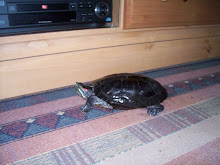Somewhere in the series we realized something was up. They never showed the candidate's face and we only saw him in long shots. Word balloons would cover his face when we got close. At first we thought they didn’t want to confuse us with any similarity to an image of a real person, but eventually we began to speculate. Here’s where my memory gets hazy but I think there were hints from some characters that they didn’t like him for personal reasons. Eventually, in the very last pages of the series we see Governor Pettigrew, war hero and family man, get the nomination of his party. The big reveal? He’s African-American, or as they put it in the story in 1964, Negro.
We came to admire this man and even root for him. Any racial prejudice we might have had was given a hard knock, and it encouraged a young mind to think about people based on the content of their character and not the color of their skin. This is the kind of practical morality that was associated with the Catholic Church in 1964.
And now Obama, the real-life Tim Pettigrew. The pundits are shocked how well he’s doing with white men. H-m-m. These pundits go to the same schools and are hired by the fathers and mothers of friends who also went to those same schools. They don’t ride the subway or go to public school meetings for their kids. They live in lily-white suburbs and when they say Hi every day to their doorman, they make believe that it shows how open their hearts are. They pretend to know what I think by assuming I’m too racist to even consider voting for an African-American. I wonder if the fault is not in me or the stars but in themselves.
We’ve tried the stupidest kid in the class, now let’s try the smartest. I know Carter was smart, but the president can’t be talking about malaises and driving the market in the toilet. Give this guy a shot.
Personal note: my two sons are now registered for the draft and I don’t want any part of a 100 years war with Big John.




